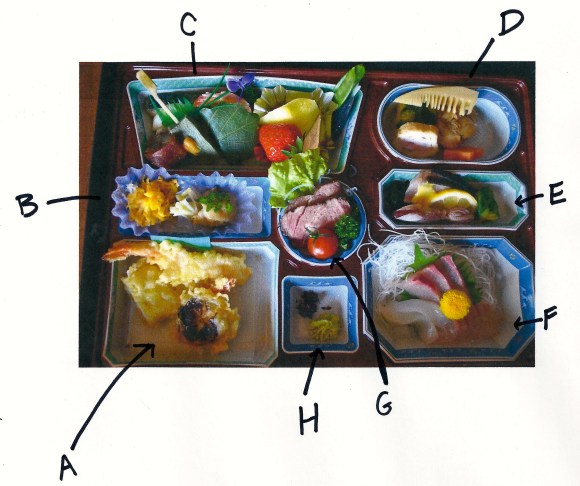
If you’ve been to Japan, you may have been told about the two most common table etiquette faux pas, both related to funerals and death. If you’re not very familiar with Japanese customs, these gaffes are way too easy to commit because on the surface, nothing seems obviously wrong with them.
Since we at RocketNews24 believe that unraveling the mysteries of Japanese culture is part of the fun of traveling and even living in Japan, in this article we’re going to explore strange new worlds, seek out new life and new civilizations, and boldly go where no gaijin has gone before: We’re going to reveal the meaning behind the mother of all lunch boxes: the funeral bento. It’s big, it’s bulky, it’s boisterous, and it’s drop-dead gorgeous.
This veritable feast in a box contains a seven-course meal which is big enough to share with the deceased. Yep, that’s right. Join us while we eat with the dead. Read on!
But first let’s explore the two most common table etiquette faux pas that we introduced at the beginning.
It is impolite to stick your chopsticks straight up into a bowl of rice. This is because that very gesture is used at a Buddhist wake and again at memorial services afterwards. To avoid reminding people of funerals while at the dinner table, when you put down your chopsticks for a moment between bites, it is best to use the chopsticks rest made for that purpose.
The second major gaffe is to pass food between two people via chopsticks, or to have two people grabbing for the same piece of food with their chopsticks. By all means use chopsticks to pick up pieces of food, but place the food directly onto the other person’s plate rather than “passing” it to them or having them take it from you. Why? Because at a Japanese cremation, the deceased’s bones are passed from family member to family member and then placed into the urn. Yeah, let’s not remind people of these things at mealtimes, okay?
- Not bento, but Ozen
The word “bento” is used for the common type of boxed food people eat. While this elaborate dinner plate eaten at funerals is also served in a box, it is distinguished from regular bento by using the word Ozen, which indicates food that will be consumed inside the house (or funeral hall) as opposed to a take-out style bento lunch box. If you look up Ozen in the dictionary, you’ll find it is defined as “a small lacquer table.” This is because traditionally this food, which consisted of five dishes (rice, miso soup, pickles, boiled/simmered vegetables and beans) was served on these small tables. The current funeral box, or Ozen, is used as a more convenient way of serving many dishes without having to have a person serving each food individually.
Ozen is derived from the concept of ryo-gu-zen, which when broken down morphologically means “spirit-give-table.” In other words, you are sharing your meal with the recently departed.
“It’s a very romantic idea,” explains Nishu, a Nichiren Buddhist priest. “We want to treat the deceased as if they are still alive.” This theme continues through the ensuing memorial ceremonies for up to 50 years, each time sharing a meal with them. “We see this same idea at Obon (the Festival of the Dead held in August), when we believe our ancestors come back from the dead to visit us.”
- So, what goes into the meal, and why is it so gorgeous?
In the old days Buddhist monks ate shojin ryori, vegetarian food that you can still find served at temples. But nowadays, Japanese monks eat all kinds of food, including meat and fish. “We know we shouldn’t eat living things, but these days we do eat them, while knowing it is not so good. This is part of the ambivalence of the Japanese,” says Nishu.
Ozen has a base of rice and vegetables. Everything else is extra. Adding a variety of foods makes a more impressive meal and at a funeral, it is felt that people will be more satisfied. Over the years, these meals have been infused with roast beef, raw fish and tempura, making them more gorgeous. “This makes everyone happy,” says Nishu.
▼Juicy slices of roast beef on a leaf of lettuce with parsley and a mini tomato. Does this make you happy?
▼How about this fresh baby squid with lemon? You’re definitely smiling now.
The wife of the Shingon Buddhist priest in our community further elaborates on the custom of shojin ryori. “From the day a person dies until their funeral, the immediate family shouldn’t eat any meat or fish.” This period is approximately three days. “A good Buddhist will eat only vegetables and rice until after that day.” Since the first meal after the funeral is the bento, this may also be a sign of crossing the barrier back into normal life in its myriad symbolic ways, including the gastronomical.
Ozen are sure to feature seasonal food, as the seasons are very important in Japan, even for funerals. The inclusion of a young bamboo shoot or a baby squid shows it is early spring since it is only in these seasons that this food is available. For the immediate family, these foods may serve as poignant reminders of their loved one for years after. My next door neighbor tends to recall that her father-in-law died in the spring, rather than giving the month, for example.
▼A conspicuous bamboo shoot announces the season while resting on top of a piece of broccoli, a shellfish, and a slice of fish paste.
▼Tempura is often served with salt or a mixture of salt and macha.
▼Foliage is always an important part of Japanese food presentation. Leaves are used to wrap foods in, strawberry stems are left attached and a mini plastic iris hovers in the background to provide color. And don’t forget that bento staple: plastic grass!
▼Sashimi has become an accepted, if not desirable, ingredient in funereal meals. Notice the foliage: an ornamental chrysanthemum and a shiso leaf (both edible) on top of shredded daikon radish.
- What should not be included in Ozen?
You won’t find sekihan (red beans and rice) in the departing meal because red (beans) and white (rice) is a celebratory color more suited to weddings. In a funeral, sometimes black beans and rice are used instead.
Mrs. Harada, a funeral bento-maker says the symbols of shochikubai (pine, bamboo and plum) should not be used because they are used for celebrations such as weddings and births. More often used in art as motifs on vases and china, you’ll also find the celebratory symbols gracing lacquer bento boxes for New Years. For funerals you’ll find the lotus blossom used as a motif instead, as it is not only serves as a symbol of Buddhism, but one of enlightenment.
- How much do Ozen cost?
By now you’re probably wondering how much these spreads cost and if it’s worth it to try to attend as many funerals as possible to get a good wholesome meal. But being a guest at a funeral in Japan is going to be set you back by 10,000 to 30,000 yen (US$84-253), depending on your relationship to the deceased. This money is presented to the family to help defray the costs of the ceremony. If you’re just an acquaintance, then you’ll pay as little as 5,000 yen (and probably not be invited to the actual funeral). If you are a neighbor, you may pay 10-20,000 yen (you decide), and close family pay 30,000 yen or more. So if you are of the latter two types of guests, your fees are going to help pay the costs of the funeral, which includes the meal.
Nonetheless, we were curious as to the cost of putting one of these meals together, so we visited a packaging store to find out.
The construction of Ozen starts with a tray with little decorative food domiciles in it.
▼The plastic trays are tastefully decorated using subdued colors with the dishes molded into it.
▼Here, we see them on the shelves at a packaging store that sells wholesale to bento makers.
▼The price on this one with seven compartments is sold in packs of 20 and costs 155.5 yen per tray.
▼ The trays, after they’re filled with food, are put into a box, like this one. The chopsticks are provided by the bento-maker and has their restaurant/company name printed on the chopsticks cover.
▼These boxes, or box covers, are bought separately. This is a packet of 50. Each one costs 41.5 yen.
To complete the set, the preparer must buy a furoshiki cloth wrapping (which will be explained later) and a nice tasselled elastic band to go around the box to keep it closed, another 100 yen or so per bento. While these combined costs are not too high (about 300 yen), since these are wholesale prices, it’s safe to say that the bento-maker will add an extra 500 yen (US$4.21) to the cost of the meal for putting the package together including labor. So that leaves us with the cost of the food and preparation. When I asked obento-makers the price, they generally agreed that Ozen starts at around 3,000 yen (US$25) for the most basic. The one we’ve featured in the photo is typical of one that costs 5,000 yen (US$42).
- Why are these meals so big?
A typical funeral bento box measures 38 cm x 28 cm and is about 6 cm in deep. While you may eat the whole box of food in one go, most people will eat some at the venue, then take the rest home. “Funerals are a stressful time for families and friends, so if they don’t have to cook afterwards, it will make things easier for them,” says Mrs. Harada. Most people will finish the meal that night for dinner or save some of it for the next day.
And this is where the furoshiki comes in. It is used to wrap the unfinished bento in.
▼Bento wrapped in a (disposable) furoshiki cloth by the guest.
The furoshiki makes the box easy to carry home on the train.
These boxes, by the way, can be thrown out on recycled garbage day and are stacked together at the neighborhood recycling spot.
- A Closer look at Ozen ingredients:
Let’s enumerate the ingredients of this funeral bento. Note that this Ozen included rice, miso soup and chawanmushi, a savory egg custard not pictured as they were served separately in their own bowls. The meal was followed by green tea.
Clockwise from bottom left-hand corner:
A. Tempura. This tempura appears to be served rather sparingly. That’s not exactly true. This is an actual bento I received at a funeral and as I sat there staring at this gorgeous gastronomic wonder, I really wanted to take a photo of it. But this would be really impolite at a funeral, right? So I refrained and instead started eating the tempura. But as I tucked into the veggies, I noticed a 70-year-old woman at the next table using her smartphone–to take a photo! Of course, I immediately followed her example and took this photo. Unfortunately, half the tempura was already gone.
B. The small round paper pleated cup holds namasu: daikon radish cut into fine strips and seasoned with vinegar, with shredded omelet on top. The cup on the right is a shellfish topped with miso and mustard.
C. A strawberry and a piece of melon are in a foil cup on the right with two snow peas poised in the corner. Next to the strawberry is a rice cake wrapped in an oak leaf. Bamboo skewered wheat gluten flavored with macha. The round piece to the left of that is burdock rolled with sliced beef. Behind that, in back of the iris and bento grass, barely visible, is sliced lotus root seasoned with vinegar, a boiled shrimp and a baked Spanish mackerel. Also, next to the snow peas you’ll find a small plastic bottle of soy sauce.
D. bamboo shoot, boiled fish and a piece of broccoli. On the left in the front is fish paste mixed with vegetables and in the front on the right is a piece of carrot in the shape of a star.
E. Fresh baby squid in the front, lemon, Spanish mackerel sashimi with a dollop of miso for the boiled seaweed on the left. To the right is slices of cucumber soaked in vinegar.
F. For the main sashimi dish, we have squid and hamachi on top of a shiso leaf and a bed of shredded daikon radish and topped with a yellow chrysanthemum.
G. Two slices of roast beef, a lettuce leaf, parsley, and a mini tomato.
H. Two spices in this square container are tade in the back and wasabi in the front.
I suppose the best thing about this custom of eating Ozen and sharing it with the deceased is that there is no such thing as “the last supper.” And just a note that when I die, I’d like dessert too!
All images © Amy Chavez/RocketNews24


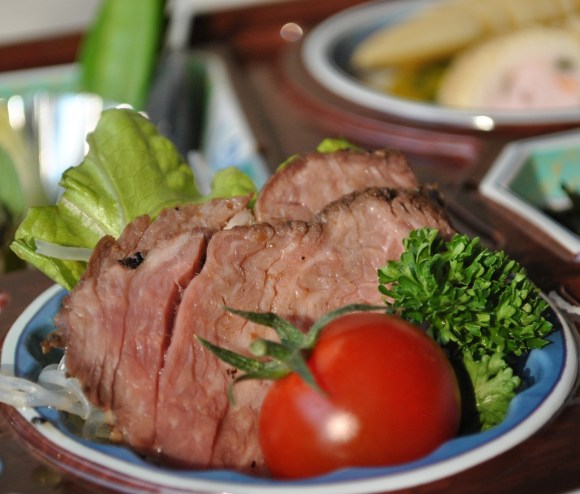
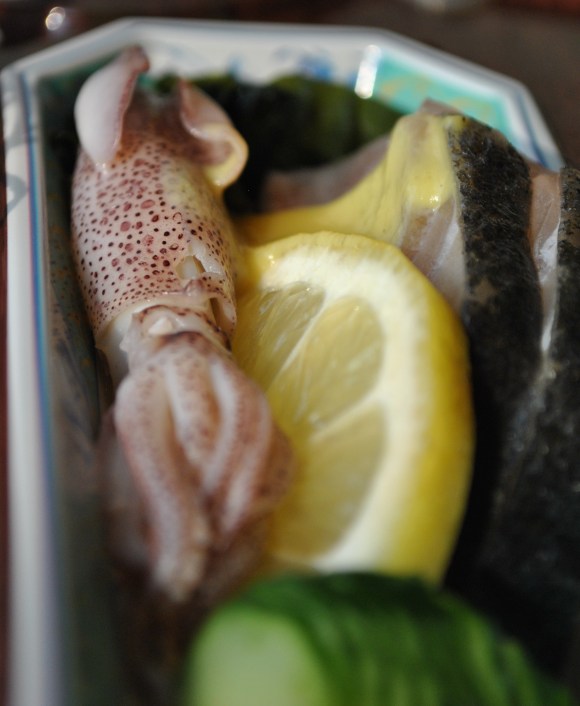
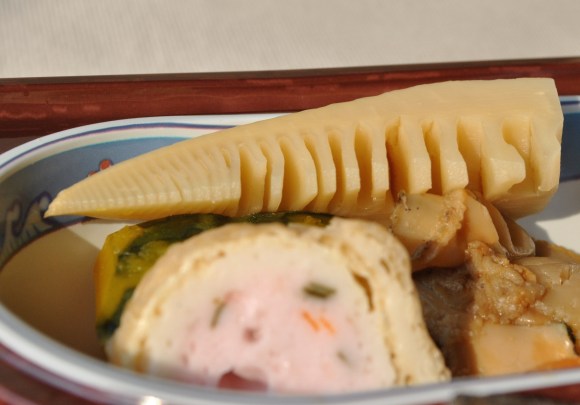
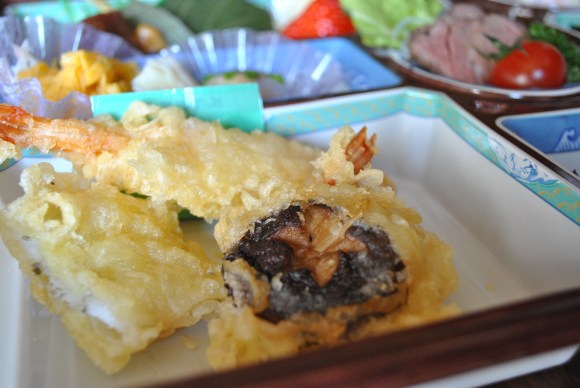
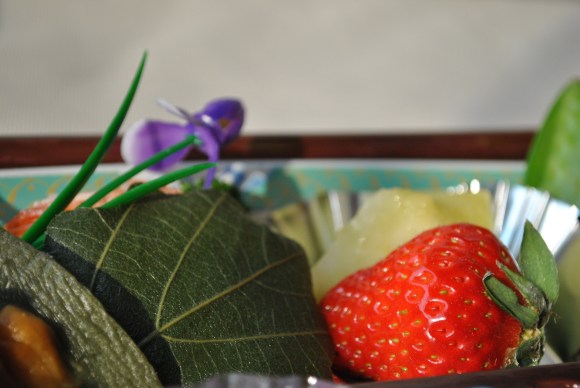
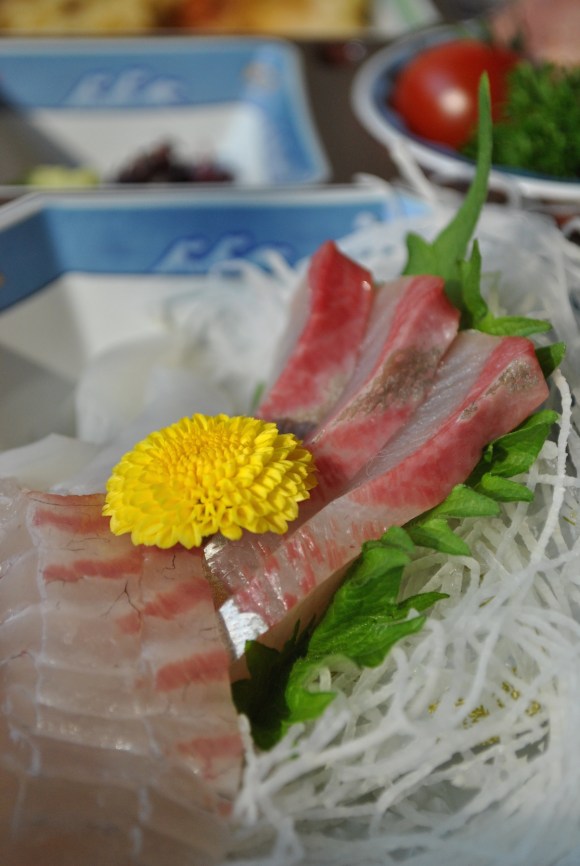
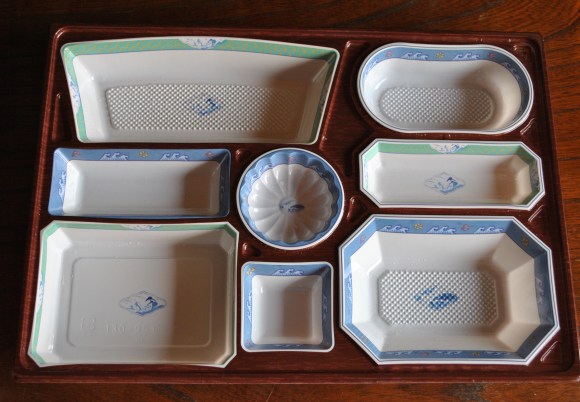

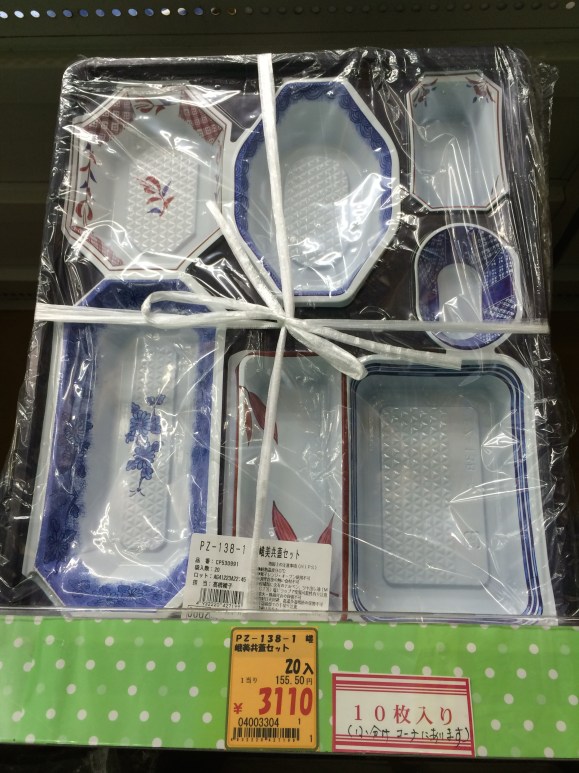
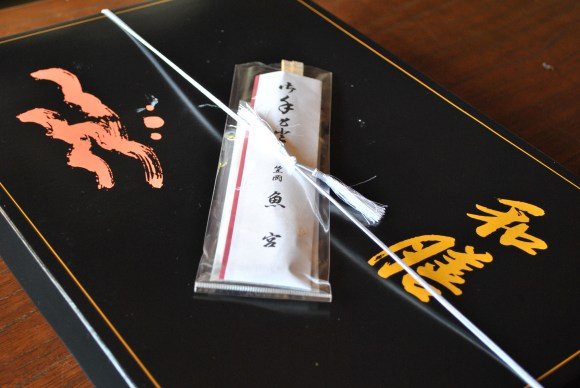
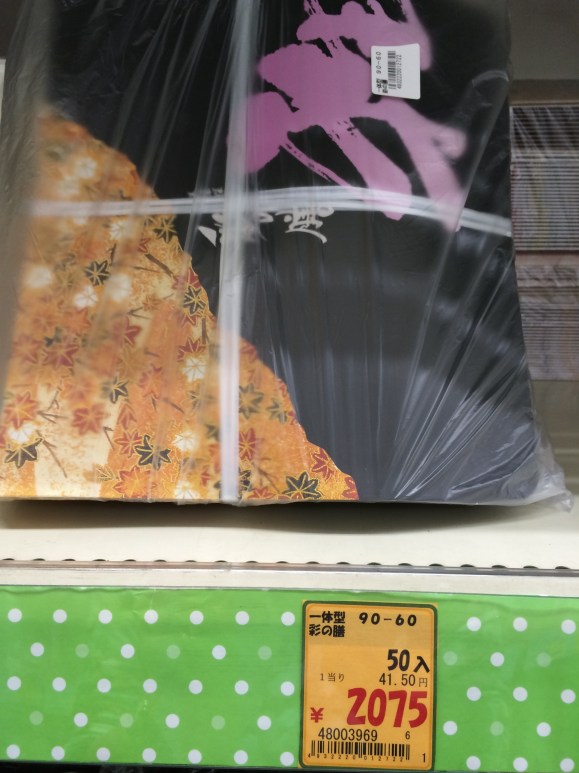

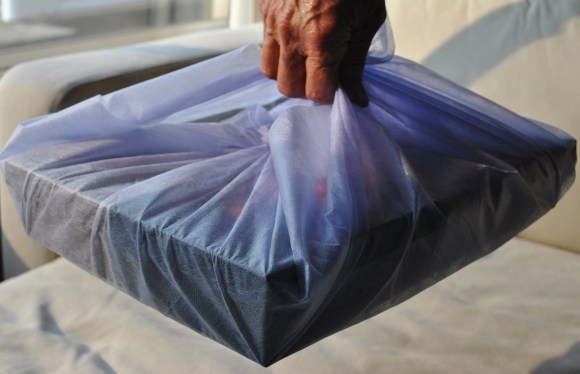
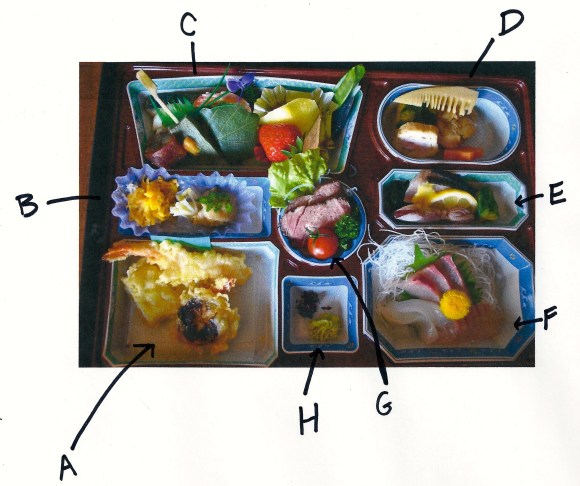
 Three main reasons why fewer and fewer Japanese people are having funerals
Three main reasons why fewer and fewer Japanese people are having funerals Meet the Mega Bento, a Japanese meal that’s heavier than a newborn baby
Meet the Mega Bento, a Japanese meal that’s heavier than a newborn baby Delicious bento without the plastic waste — the OniBen is the one-handed mini meal we all need
Delicious bento without the plastic waste — the OniBen is the one-handed mini meal we all need We tried all seven of Muji’s new “Bento of the Day” boxed lunch sets
We tried all seven of Muji’s new “Bento of the Day” boxed lunch sets Musical ekiben adds a tune to your train station bento meal
Musical ekiben adds a tune to your train station bento meal That time Seiji called JASRAC to ask why he didn’t get paid royalties for his song being on TV
That time Seiji called JASRAC to ask why he didn’t get paid royalties for his song being on TV We revisited Sweets Paradise after a decade to see if Japan’s dessert buffet still delivers
We revisited Sweets Paradise after a decade to see if Japan’s dessert buffet still delivers The best Starbucks Japan Frappuccinos we want to drink again in 2026
The best Starbucks Japan Frappuccinos we want to drink again in 2026 Hayao Miyazaki says Happy New Year to Studio Ghibli fans with new art for Year of the Horse
Hayao Miyazaki says Happy New Year to Studio Ghibli fans with new art for Year of the Horse Starbucks Japan ready to get Year of the Horse started with adorable drinkware and plushies【Pics】
Starbucks Japan ready to get Year of the Horse started with adorable drinkware and plushies【Pics】 Tokyo’s dedicated Nintendo store finally begins offering its exclusive items online
Tokyo’s dedicated Nintendo store finally begins offering its exclusive items online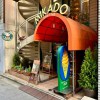 Mikado Coffee is a 76-year-old coffee chain with a major celebrity connection
Mikado Coffee is a 76-year-old coffee chain with a major celebrity connection Japanese thug wear from Birth Japan perfect for those breaking bad next year
Japanese thug wear from Birth Japan perfect for those breaking bad next year Japanese department store rooftop is a secret oasis where you can escape the crowds in Tokyo
Japanese department store rooftop is a secret oasis where you can escape the crowds in Tokyo 7-Eleven Japan’s ramen-cooking robot whipped us up a bowl of noodles【Taste test】
7-Eleven Japan’s ramen-cooking robot whipped us up a bowl of noodles【Taste test】 Cyberpunk anime meets traditional culture in Ghost in the Shell gold leaf Japanese changing screens
Cyberpunk anime meets traditional culture in Ghost in the Shell gold leaf Japanese changing screens 7 great places to see Mt. Fuji from without having to climb it
7 great places to see Mt. Fuji from without having to climb it Hello Kitty Choco Egg figures are an adorable trip through three periods of Japanese pop culture【Pics】
Hello Kitty Choco Egg figures are an adorable trip through three periods of Japanese pop culture【Pics】 We found possibly the quietest Japanese-style hotel in Tokyo’s bustling Shinjuku district
We found possibly the quietest Japanese-style hotel in Tokyo’s bustling Shinjuku district Japan’s otoshidama tradition of giving kids money at New Year’s gets a social welfare upgrade
Japan’s otoshidama tradition of giving kids money at New Year’s gets a social welfare upgrade Sumo Sanrio! Hello Kitty and pals team up with Japan Sumo Association for new merch【Pics】
Sumo Sanrio! Hello Kitty and pals team up with Japan Sumo Association for new merch【Pics】 More Than a Capsule Stay: Why Solo Travelers Choose “global cabin Yokohama Chinatown”
More Than a Capsule Stay: Why Solo Travelers Choose “global cabin Yokohama Chinatown” Japan’s oldest largetooth sawfish in captivity back on display in Mie Prefecture
Japan’s oldest largetooth sawfish in captivity back on display in Mie Prefecture 7-Eleven Japan starts new temporary luggage storage service in over 300 branches
7-Eleven Japan starts new temporary luggage storage service in over 300 branches Disillusionment at Tsukiji’s tourist-target prices led us to a great ramen restaurant in Tokyo
Disillusionment at Tsukiji’s tourist-target prices led us to a great ramen restaurant in Tokyo Starbucks teams up with 166-year-old Kyoto doll maker for Year of the Horse decorations【Photos】
Starbucks teams up with 166-year-old Kyoto doll maker for Year of the Horse decorations【Photos】 Tokyo considering law requiring more trash cans following litter increase in heavily touristed area
Tokyo considering law requiring more trash cans following litter increase in heavily touristed area Tokyo’s Tsukiji sushi neighborhood asks tour groups to stay away for the rest of the month
Tokyo’s Tsukiji sushi neighborhood asks tour groups to stay away for the rest of the month Tokyo event lets you travel back in time, for free, to celebrate 100 years since Showa era start
Tokyo event lets you travel back in time, for free, to celebrate 100 years since Showa era start Sanrio theme park in Japan announces plans to expand into a Sanrio resort
Sanrio theme park in Japan announces plans to expand into a Sanrio resort Japan may add Japanese language proficiency, lifestyle classes to permanent foreign resident requirements
Japan may add Japanese language proficiency, lifestyle classes to permanent foreign resident requirements Stamina-destroying “Paralysis Noodles” are Tokyo’s newest over-the-top ramen innovation
Stamina-destroying “Paralysis Noodles” are Tokyo’s newest over-the-top ramen innovation Survey asks foreign tourists what bothered them in Japan, more than half gave same answer
Survey asks foreign tourists what bothered them in Japan, more than half gave same answer Japan’s human washing machines will go on sale to general public, demos to be held in Tokyo
Japan’s human washing machines will go on sale to general public, demos to be held in Tokyo Japan’s deadliest food claims more victims, but why do people keep eating it for New Year’s?
Japan’s deadliest food claims more victims, but why do people keep eating it for New Year’s? We deeply regret going into this tunnel on our walk in the mountains of Japan
We deeply regret going into this tunnel on our walk in the mountains of Japan Studio Ghibli releases Kodama forest spirits from Princess Mononoke to light up your home
Studio Ghibli releases Kodama forest spirits from Princess Mononoke to light up your home Major Japanese hotel chain says reservations via overseas booking sites may not be valid
Major Japanese hotel chain says reservations via overseas booking sites may not be valid Put sesame oil in your coffee? Japanese maker says it’s the best way to start your day【Taste test】
Put sesame oil in your coffee? Japanese maker says it’s the best way to start your day【Taste test】 No more using real katana for tourism activities, Japan’s National Police Agency says
No more using real katana for tourism activities, Japan’s National Police Agency says Starbucks Japan reveals new sakura drinkware collection, inspired by evening cherry blossoms
Starbucks Japan reveals new sakura drinkware collection, inspired by evening cherry blossoms Updated cherry blossom forecast shows extra-long sakura season for Japan this year
Updated cherry blossom forecast shows extra-long sakura season for Japan this year Studio Ghibli bento box collections released just in time for hanami sakura-viewing picnics
Studio Ghibli bento box collections released just in time for hanami sakura-viewing picnics The 5 best Japanese bento to buy at Kyoto Station
The 5 best Japanese bento to buy at Kyoto Station Bento bankruptcies increasing as Japan’s boxed lunch shops struggle in the new dining landscape
Bento bankruptcies increasing as Japan’s boxed lunch shops struggle in the new dining landscape We tried a gourmet chocolate bento box worth 2,700 yen, and every bite was worth it
We tried a gourmet chocolate bento box worth 2,700 yen, and every bite was worth it Japanese boxed lunches pulling into France at authentic bento stand opening in Paris station
Japanese boxed lunches pulling into France at authentic bento stand opening in Paris station Discount super market’s super cheap bento wows us with its looks, confuses us with its taste
Discount super market’s super cheap bento wows us with its looks, confuses us with its taste Cheap vs. expensive — Is a premium-priced tempura bento really worth it?【Taste test】
Cheap vs. expensive — Is a premium-priced tempura bento really worth it?【Taste test】 The cutest, must-have bento lunchboxes you can buy and eat on the train
The cutest, must-have bento lunchboxes you can buy and eat on the train It’s a Japanese boxed lunch in the palm of your hand with the new bento rice ball
It’s a Japanese boxed lunch in the palm of your hand with the new bento rice ball How to make a Japanese convenience store bento look like a meal from a restaurant
How to make a Japanese convenience store bento look like a meal from a restaurant Japanese mother creates beautiful, educational bentos that resemble Japan’s prefectures
Japanese mother creates beautiful, educational bentos that resemble Japan’s prefectures Japanese sake brewery helps to create a stunning bento meal
Japanese sake brewery helps to create a stunning bento meal Behold the Oniben, a new type of rice ball that’s part onigiri, part bento boxed meal
Behold the Oniben, a new type of rice ball that’s part onigiri, part bento boxed meal This Tokyo coronavirus quarantine facility’s bento boxed meals are amazingly good【Taste test】
This Tokyo coronavirus quarantine facility’s bento boxed meals are amazingly good【Taste test】 Japan’s new bento has people talking and hearts burning because it’s all fried chicken skins
Japan’s new bento has people talking and hearts burning because it’s all fried chicken skins Japan’s top train station bento boxed lunches for 2016, as picked by travelers
Japan’s top train station bento boxed lunches for 2016, as picked by travelers
Leave a Reply